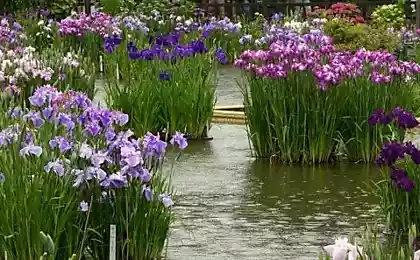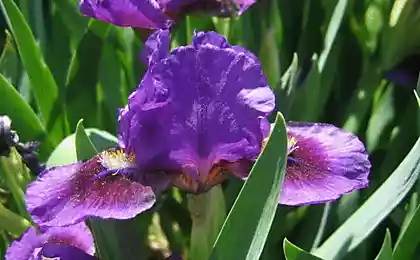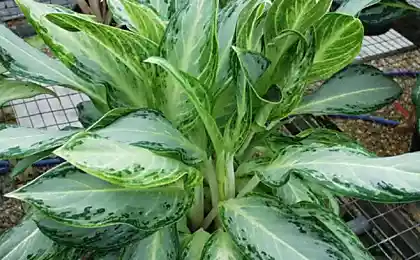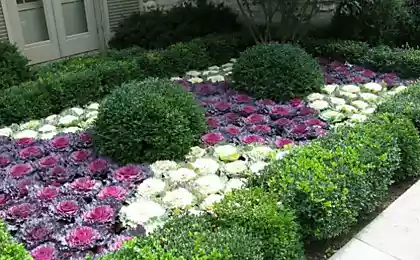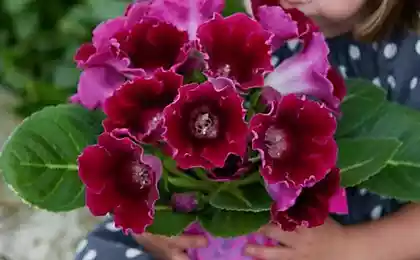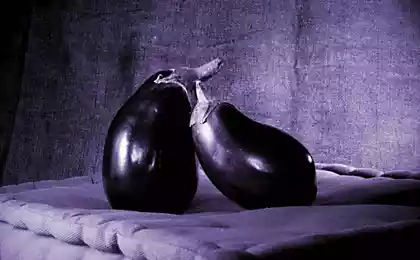476
The secrets of growing irises
Planting and transplanting plants, as a rule, is confined to the period when there is active root growth. For iris this time comes in 2-3 weeks after flowering.
First, there are the beginnings of new roots, clearly visible in the form of bumps on the rhizome, and then grow young, fragile roots. It is important to have time to carry out the division at the stage of beginnings, as young roots are easily broken. Or wait for August – beginning of September, when they become fibrous and not so brittle.

Iris – rhizomatous plants that can grow in one place for several years. Champions in this regard are the Siberian irises, which in optimal conditions can grow in one place up to 30 years, growing in clumps up to 2.5 m in diameter.
The most beloved of all bearded irises must be divided in 7-8 years, and fast growing varieties – every 3-4 years, as the rhizomes grow on the periphery, and the old links in the middle of the clumps die, reducing the intensity of flowering and ornamental plantings.
If you have a large collection to start better with early irises – bearded dwarf, medium and tall varieties can a week to wait. Beardless irises divide in August or early September.
Planting material
Standard planting bearded iris unit is a one-year link – "blade" with a fan of leaves. The number of leaves you can usually predict, will there be a bloom in the coming year. If the fan consists of 7-8 leaves, flower Bud should already lay, as if from 3-4 leaves and flowering will have to wait 2-3 years.
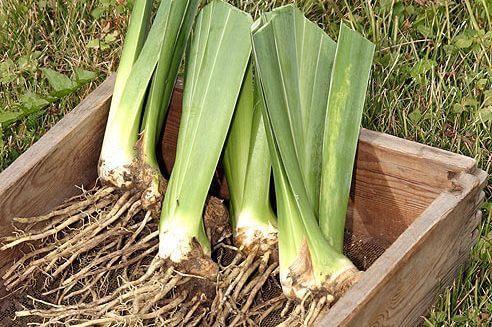
If it is time to divide irises available in the garden, the shrub must be watered, dig a fork on all sides and remove from the land. Rinse, cut the rhizomes into segments with one or two year links.
The leaves and roots are pruned to reduce the flow of moisture, leaving only 10 cm These delenki withstand dry storage at room temperature for 2 weeks without any damage. Wet storage contraindicated, as the rhizomes may rot. Remaining after dividing the units, without roots and leaves is also allowed in the case – they are planted in shkolku for growing. Next season they Wake up dormant buds, but these plants bloom later on, sometimes 5-6 a year.
To obtain planting material irises and not disturbing the entire hive. For this purpose it is break from one side and cut off part of the rhizome, which is then divided into annual units. The remainder sprinkled the ground only after disinfection of slices of wood ashes or green paint. So the problem is not only reproduction, but also rejuvenate the plants.
Using a simple technique, you can increase the efficiency of vegetative propagation. Some rhizomes are formed sokolinye small buds that do not Wake up due to the active limit the growth of roots. Immediately after flowering across this rhizome is cut a narrow wedge that separates the apical fan of leaves from dormant buds.
The cut sprinkled with charcoal. To the next growing season buds come alive and create some new links with roots and leaves that can be separated. This method allows to increase the multiplication factor hard growing varieties and to obtain a large amount of planting material.
Beardless irises, Siberian iris (Iris sibirica), water iris (Iris pseudacorus) iris smooth (Iris laevigata), bristly iris (Iris setosa), multi-colored iris (Iris versicolor) divide every 10-12 years in August or early spring, at the beginning of regrowth. The leaves are pruned to 2/3 of the roots 8-10 cm Delenki these moisture-loving irises do not tolerate drying, so they are stored until planting in moist sphagnum.
Soil preparation
Bearded irises absolutely can not tolerate stagnant water, their landing is only suitable drained soil. At high groundwater levels practiced landing on a raised or elevated ridge. A place for planting irises should be well lit, although valid light partial shade in the afternoon. In the shadow of the irises bloom poorly.
For Siberian irises, marsh, mixed the excess moisture not only dangerous, but also desirable. They can grow on more acidic (pH 5.5-6.5), is improved by addition of sand and clay and peaty soils in the coastal zone of the reservoir.
The stage of preparation of the soil for all irises is of great importance. Dense branching rhizomes make it difficult weeding perennial weeds, especially bother and irises goutweed, couch grass, sow Thistle, dandelion. So the plot is recommended to prepare in advance. Just dig over the soil and pick weeds in this case is not enough. Hard Iriomote sieved twice through the roar — first large, then small cells.
Irises are unpretentious, undemanding to soil conditions, but more sophisticated than your chosen variety is, the better should be the conditions of its cultivation. On rich soil the blooms will be incomparably richer than the poor loam. Therefore, in the soil under bearded irises make compost or rich garden soil, as well as phosphorus-potassium fertilizer (preferably monophosphate potassium than superphosphate) and wood ash or dolomite flour for deoxidation.
The soil should be slightly acidic or neutral (pH 6,5-7,0). To add sand loams, to sandy soils, on the contrary – clay in the ground. To the top layer of 15-20 cm mixed with lots of sand. All this training should be finished in 3-4 weeks before planting to give the land to settle.
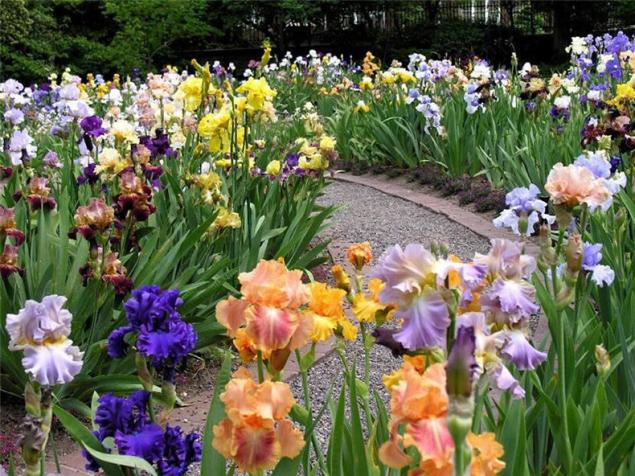
Planting irises
Tall varieties of iris, bearded and beardless planted at a distance of 70-80 cm, a dwarf is closer to 30-40 cm
When planting bearded irises at the bottom of the wells mound an earth mound. To establish a rhizome, horizontally to the soil surface or at a slight angle and straighten the roots. The fan leaves should be slightly elevated and facing South in order to develop a symmetrical Bush. Covered with earth, leaving the upper part of the shoulder blade on the surface and watered. Bearded irises absolutely can not tolerate the penetration of roots, which provokes the development of rot.
Beardless irises put differently, recessed a few inches, and mulched with peat or pine litter to retain moisture. In the hot days of landing pritenyayut.
To plant irises is possible until the end of September, but in the later stages increases the risk of plant loss during the winter. In case of late planting bearded irises Harbor 7-8-cm layer of sand with wood ashes (in a bucket of sand, 1 Cup of ash) and spruce spruce branches, beardless with peat mulch.
Transplanting of plants with a lump of land can be made in any period since the beginning of regrowth of leaves to fall. However, it is desirable to time the move as a division, to the period of active root growth in the last decade of July.
How to get rid of rats and mice with herbs
26 great ideas for the home and garden
The vulnerability of bearded irises to bacterial and Botrytis forces to use in their farming rotation. To return the iris to its former place in 3-4 years. If the plants are sick, it is helpful to improve the soil by sowing cover crops — winter rye, mustard, and phacelia. With a lack of landing areas in place of the bearded iris can be planted Siberian, which is resistant to these diseases and has a beneficial effect on the soil.published
P. S. And remember, just changing your mind — together we change the world! ©
Source: vk.com/floschool?w=wall-47900340_224742
First, there are the beginnings of new roots, clearly visible in the form of bumps on the rhizome, and then grow young, fragile roots. It is important to have time to carry out the division at the stage of beginnings, as young roots are easily broken. Or wait for August – beginning of September, when they become fibrous and not so brittle.

Iris – rhizomatous plants that can grow in one place for several years. Champions in this regard are the Siberian irises, which in optimal conditions can grow in one place up to 30 years, growing in clumps up to 2.5 m in diameter.
The most beloved of all bearded irises must be divided in 7-8 years, and fast growing varieties – every 3-4 years, as the rhizomes grow on the periphery, and the old links in the middle of the clumps die, reducing the intensity of flowering and ornamental plantings.
If you have a large collection to start better with early irises – bearded dwarf, medium and tall varieties can a week to wait. Beardless irises divide in August or early September.
Planting material
Standard planting bearded iris unit is a one-year link – "blade" with a fan of leaves. The number of leaves you can usually predict, will there be a bloom in the coming year. If the fan consists of 7-8 leaves, flower Bud should already lay, as if from 3-4 leaves and flowering will have to wait 2-3 years.

If it is time to divide irises available in the garden, the shrub must be watered, dig a fork on all sides and remove from the land. Rinse, cut the rhizomes into segments with one or two year links.
The leaves and roots are pruned to reduce the flow of moisture, leaving only 10 cm These delenki withstand dry storage at room temperature for 2 weeks without any damage. Wet storage contraindicated, as the rhizomes may rot. Remaining after dividing the units, without roots and leaves is also allowed in the case – they are planted in shkolku for growing. Next season they Wake up dormant buds, but these plants bloom later on, sometimes 5-6 a year.
To obtain planting material irises and not disturbing the entire hive. For this purpose it is break from one side and cut off part of the rhizome, which is then divided into annual units. The remainder sprinkled the ground only after disinfection of slices of wood ashes or green paint. So the problem is not only reproduction, but also rejuvenate the plants.
Using a simple technique, you can increase the efficiency of vegetative propagation. Some rhizomes are formed sokolinye small buds that do not Wake up due to the active limit the growth of roots. Immediately after flowering across this rhizome is cut a narrow wedge that separates the apical fan of leaves from dormant buds.
The cut sprinkled with charcoal. To the next growing season buds come alive and create some new links with roots and leaves that can be separated. This method allows to increase the multiplication factor hard growing varieties and to obtain a large amount of planting material.
Beardless irises, Siberian iris (Iris sibirica), water iris (Iris pseudacorus) iris smooth (Iris laevigata), bristly iris (Iris setosa), multi-colored iris (Iris versicolor) divide every 10-12 years in August or early spring, at the beginning of regrowth. The leaves are pruned to 2/3 of the roots 8-10 cm Delenki these moisture-loving irises do not tolerate drying, so they are stored until planting in moist sphagnum.
Soil preparation
Bearded irises absolutely can not tolerate stagnant water, their landing is only suitable drained soil. At high groundwater levels practiced landing on a raised or elevated ridge. A place for planting irises should be well lit, although valid light partial shade in the afternoon. In the shadow of the irises bloom poorly.
For Siberian irises, marsh, mixed the excess moisture not only dangerous, but also desirable. They can grow on more acidic (pH 5.5-6.5), is improved by addition of sand and clay and peaty soils in the coastal zone of the reservoir.
The stage of preparation of the soil for all irises is of great importance. Dense branching rhizomes make it difficult weeding perennial weeds, especially bother and irises goutweed, couch grass, sow Thistle, dandelion. So the plot is recommended to prepare in advance. Just dig over the soil and pick weeds in this case is not enough. Hard Iriomote sieved twice through the roar — first large, then small cells.
Irises are unpretentious, undemanding to soil conditions, but more sophisticated than your chosen variety is, the better should be the conditions of its cultivation. On rich soil the blooms will be incomparably richer than the poor loam. Therefore, in the soil under bearded irises make compost or rich garden soil, as well as phosphorus-potassium fertilizer (preferably monophosphate potassium than superphosphate) and wood ash or dolomite flour for deoxidation.
The soil should be slightly acidic or neutral (pH 6,5-7,0). To add sand loams, to sandy soils, on the contrary – clay in the ground. To the top layer of 15-20 cm mixed with lots of sand. All this training should be finished in 3-4 weeks before planting to give the land to settle.

Planting irises
Tall varieties of iris, bearded and beardless planted at a distance of 70-80 cm, a dwarf is closer to 30-40 cm
When planting bearded irises at the bottom of the wells mound an earth mound. To establish a rhizome, horizontally to the soil surface or at a slight angle and straighten the roots. The fan leaves should be slightly elevated and facing South in order to develop a symmetrical Bush. Covered with earth, leaving the upper part of the shoulder blade on the surface and watered. Bearded irises absolutely can not tolerate the penetration of roots, which provokes the development of rot.
Beardless irises put differently, recessed a few inches, and mulched with peat or pine litter to retain moisture. In the hot days of landing pritenyayut.
To plant irises is possible until the end of September, but in the later stages increases the risk of plant loss during the winter. In case of late planting bearded irises Harbor 7-8-cm layer of sand with wood ashes (in a bucket of sand, 1 Cup of ash) and spruce spruce branches, beardless with peat mulch.
Transplanting of plants with a lump of land can be made in any period since the beginning of regrowth of leaves to fall. However, it is desirable to time the move as a division, to the period of active root growth in the last decade of July.
How to get rid of rats and mice with herbs
26 great ideas for the home and garden
The vulnerability of bearded irises to bacterial and Botrytis forces to use in their farming rotation. To return the iris to its former place in 3-4 years. If the plants are sick, it is helpful to improve the soil by sowing cover crops — winter rye, mustard, and phacelia. With a lack of landing areas in place of the bearded iris can be planted Siberian, which is resistant to these diseases and has a beneficial effect on the soil.published
P. S. And remember, just changing your mind — together we change the world! ©
Source: vk.com/floschool?w=wall-47900340_224742
Lev Vygotsky: a very short introduction
The first Ferris wheel powered by solar energy, will be installed in Moscow




